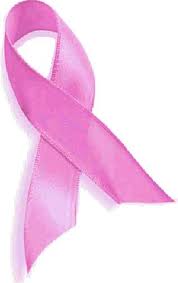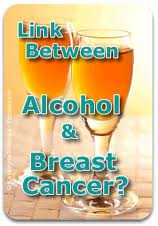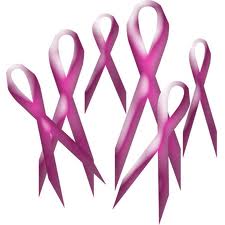 High-dose vitamin D relieves joint and muscle pain for many breast cancer patients taking estrogen-lowering drugs, according to a new study from Washington University School of Medicine in St. Louis.
High-dose vitamin D relieves joint and muscle pain for many breast cancer patients taking estrogen-lowering drugs, according to a new study from Washington University School of Medicine in St. Louis.
The drugs, known as aromatase inhibitors, are commonly prescribed to shrink breast tumors fueled by the hormone estrogen and help prevent cancer recurrence. They are less toxic than chemotherapy, but for many patients, the drugs may cause severe musculoskeletal discomfort, including pain and stiffness in the hands, wrists, knees, hips, lower back, shoulders and feet.
"About half of patients can experience these symptoms," says Antonella L. Rastelli, MD, assistant professor of medicine and first author of the study published online in the journal Breast Cancer Research and Treatment. "We don't know exactly why the pain occurs, but it can be very debilitating to the point that patients decide to stop taking aromatase inhibitors."
Because the drugs reduce cancer recurrence, finding a way to help patients stay on them is important for long-term, relapse-free survival, according to Rastelli. Aromatase inhibitors are prescribed to post-menopausal women for at least five years and often longer after a breast cancer diagnosis. There is some evidence that patients who experience the drugs' side effects are less likely to see their cancer return, providing even more incentive to help these patients continue taking them.
It was Rastelli's colleague, Marie E. Taylor, MD, assistant professor of radiation oncology, who first noticed that patients on aromatase inhibitors who experienced this pain found some relief from high doses of vitamin D.
So Rastelli's group recruited 60 patients who reported pain and discomfort associated with anastrozole, one of three FDA-approved aromatase inhibitors. The patients they studied also had low vitamin D levels. Half the group was randomly assigned to receive the recommended daily dose of vitamin D (400 international units) plus a 50,000-unit vitamin D capsule once a week. The other half received the daily dose of 400 units of vitamin D plus a weekly placebo. All subjects received 1,000 milligrams of calcium daily throughout the study.
Patients in the study reported any pain they experienced through three different questionnaires. They were asked to quantify their pain intensity, as well as report how much the pain altered their mood, affected their work and interfered with relationships and daily activities. The results show that patients receiving high-dose vitamin D every week reported significantly less musculoskeletal pain and also were less likely to experience pain that interfered with daily living.
"High-dose vitamin D seems to be really effective in reducing the musculoskeletal pain caused by aromatase inhibitors," Rastelli says. "Patients who get the vitamin D weekly feel better because their pain is reduced and sometimes goes away completely. This makes the drugs much more tolerable. Millions of women worldwide take aromatase inhibitor therapy, and we may have another 'tool' to help them remain on it longer."
Like anastrozole used in this study, the other two FDA-approved aromatase inhibitors, letrozole and exemestane, also cause musculoskeletal pain. Given the similar side effects, Rastelli says patients on these drugs may also benefit from high-dose vitamin D.
The vitamin used in this study is a plant-derived type called vitamin D2. Rastelli says it achieves the best results when given weekly because the body metabolizes it within seven to 10 days. Rastelli and her colleagues did not use high-dose vitamin D3, which remains in the body longer.
"This was a very carefully conducted study, and the placebo control makes the findings quite compelling," says Matthew J. Ellis, MD, PhD, the study's senior author and director of the Breast Cancer Program at the Alvin J. Siteman Cancer Center at Barnes-Jewish Hospital and Washington University School of Medicine in St. Louis. "We should follow up these findings further to determine the most efficacious and safe approach to vitamin D supplementation in our breast cancer patients."
Since vitamin D helps the body absorb calcium, too much of it can cause high levels of calcium in the urine, which may increase the risk of kidney stones. Such possible side effects emphasize the importance of tracking patients' urine calcium levels while taking high-dose vitamin D.
"It's important to monitor the patients, but overall it appears to be very safe," Rastelli says. "Because vitamin D2 is eliminated from the body so quickly, it's very hard to overdose."
In addition to relieving pain, the group wanted to examine whether vitamin D could protect against the bone loss often seen in patients taking aromatase inhibitors. The researchers measured each patient's bone density at the beginning of the study and again after six months.
Perhaps because of its role in calcium absorption, high-dose vitamin D did appear to help maintain bone density at the neck of the femur, the top of the thighbone near the hip joint. Although the result did not reach statistical significance, Rastelli calls the result promising and worth further studies.
"It's great that we have something as simple as vitamin D to help patients alleviate some of this pain," Rastelli says. "It's not toxic it doesn't cause major side effects. And if it is actually protecting against bone loss, that's even better."
Rastelli AL, Taylor ME, Gao F, Armamento-Villareal R, Jamalabadi-Majidi S, Napoli N, Ellis MJ. Vitamin D and aromatase inhibitor-induced musculoskeletal symptoms (AIMSS): a phase II, double-blind, placebo-controlled, randomized trial. Breast Cancer Research and Treatment. Online June 2011.
Source: Washington University in St. Louis

 An analysis among more than 40,000 postmenopausal women who were in the California Teachers Study was carried out to determine if there were differences in risk of breast cancer among women consuming alcohol according to their previous or current use of hormone therapy (HT). In the cohort, 660 women were diagnosed with invasive breast cancer during follow up.
An analysis among more than 40,000 postmenopausal women who were in the California Teachers Study was carried out to determine if there were differences in risk of breast cancer among women consuming alcohol according to their previous or current use of hormone therapy (HT). In the cohort, 660 women were diagnosed with invasive breast cancer during follow up. In many women with
In many women with  The American Medical Association's House of Delegates has come out in support of routine screening mammography for women starting at age 40.
The American Medical Association's House of Delegates has come out in support of routine screening mammography for women starting at age 40.
 Researchers at UCLA's Jonsson Comprehensive Cancer Center found that the quality of life (QOL) in younger breast cancer patients is seriously compromised and these women often suffer from severe psychological distress, infertility, premature menopause, a decrease in physical activity and weight gain. The
Researchers at UCLA's Jonsson Comprehensive Cancer Center found that the quality of life (QOL) in younger breast cancer patients is seriously compromised and these women often suffer from severe psychological distress, infertility, premature menopause, a decrease in physical activity and weight gain. The  Why do so many postmenopausal women who are treated for estrogen-sensitive breast cancer quit using drugs that help prevent the disease from recurring?
Why do so many postmenopausal women who are treated for estrogen-sensitive breast cancer quit using drugs that help prevent the disease from recurring? While mammograms certainly play an important role in the early detection of breast cancer (and women have responded to this selling point), when weighed against other issues related to quality of life, this benefit becomes the question of debate among the scientific community. While researchers have ways to measure quality of life via quality-adjusted life years (QALYS), how do women measure quality of life? Some recent research done in the UK has caught my attention that found: after 10 years of mammograms, a woman may get more harm than good from the screening. When false positive diagnoses and unnecessary surgeries were taken into account, the quality-adjusted life years (QALYs) gained were significantly reduced, James Raftery, PhD, of the University of Southampton, and colleagues reported online in the
While mammograms certainly play an important role in the early detection of breast cancer (and women have responded to this selling point), when weighed against other issues related to quality of life, this benefit becomes the question of debate among the scientific community. While researchers have ways to measure quality of life via quality-adjusted life years (QALYS), how do women measure quality of life? Some recent research done in the UK has caught my attention that found: after 10 years of mammograms, a woman may get more harm than good from the screening. When false positive diagnoses and unnecessary surgeries were taken into account, the quality-adjusted life years (QALYs) gained were significantly reduced, James Raftery, PhD, of the University of Southampton, and colleagues reported online in the  High-dose vitamin D relieves joint and muscle pain for many breast cancer patients taking estrogen-lowering drugs, according to a new study from Washington University School of Medicine in St. Louis.
High-dose vitamin D relieves joint and muscle pain for many breast cancer patients taking estrogen-lowering drugs, according to a new study from Washington University School of Medicine in St. Louis. A clinical trial to see if a gel containing an active form of
A clinical trial to see if a gel containing an active form of